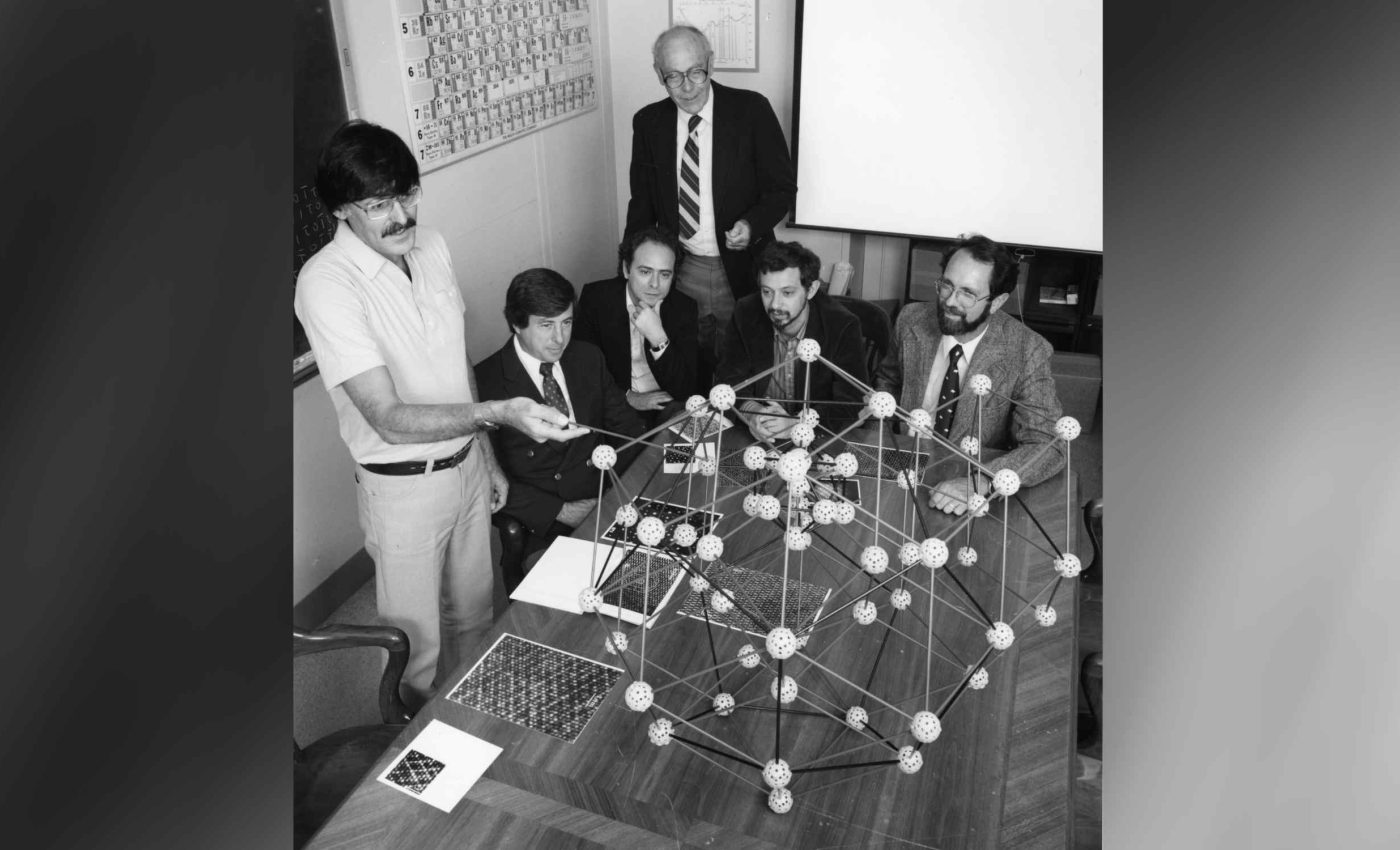
Scientists observe the 'shadow' of a crystal in 4D, confirming Penrose and Shechtman's theory
In 1982, quasicrystal structures were first recognized in a pattern that defied established crystallography rules. These structures showed that matter could be orderly yet lack the usual repeating pattern found in standard crystals.
Dan Shechtman made the discovery in 1982, but scientists have now discovered that these structures can be explained by considering periodic patterns existing in a higher dimension.
Prof. Guy Bartal from the Andrew and Erna Viterbi Faculty of Electrical and Computer Engineering (VITERBI) at the Technion reveals that this dimensional explanation also affects the way quasicrystals behave on an energetic level.
Exploring extra directions
A tesseract is often described as a four-dimensional hypercube. It includes one more direction than those found in typical width, height, and length.
Although we cannot see 4D objects, we can observe their projections in lower dimensions and study the properties reflected in that “shadow.”
Researchers recently reported that quasicrystals, considered projections of periodic structures in higher dimensions, possess unusual topology, forming noticeable patterns.
Topology deals with shape characteristics that remain constant when objects are stretched or bent, so it becomes useful for analyzing what happens when a shape in four dimensions is flattened into two.
Unexpected surface wave findings
The team examined how electromagnetic waves move across quasicrystal surfaces, finding patterns thought to be distinct looked the same if only two-dimensional measurements were taken.
This hinted that analyzing just the lower-dimensional shape missed a key element that could only be explained by referencing the original, higher-dimensional arrangement. Measuring differences required specialized imaging.
One setup relied on near-field scanning optical microscopy, which allowed researchers to spot subtle wave properties right at the surface.
Another setup, known as two-photon photoemission electron microscopy, provided additional insight into the energetic and structural details of these unusual lattices.
Insights into topology and time
Another curious phenomenon was observed in attoseconds, which is a billionth of a billionth of a second. During that fleeting interval, two patterns seemed identical, creating a puzzling overlap of forms.
This overlap was traced back to interactions between topological and thermodynamic aspects, suggesting competition between the energy needed to sustain a quasicrystal and its geometric constraints.
The explanation for such surprising effects was first proposed by Dov Levine and Paul Steinhardt, who suggested that an underlying periodic form still exists in a dimension beyond our usual three.
The idea is closely related to Penrose tilings, first explored by British mathematician Sir Roger Penrose. These tilings also lack a simple repeating pattern but contain hidden order when mapped to higher dimensions.
“The fact that a quasicrystal is a ‘shadow’ of a periodic crystal in a higher dimension is not new in itself. What we discovered is that the projection includes not only the structure but also topological properties such as vortices,” said Prof. Bartal.
Practical impact of quasicrystal patterns
Studying these shapes in four dimensions may help scientists develop novel approaches for handling data. Some experts believe that the peculiar order pattern in quasicrystals can be tapped for advanced coding and communication.
Such approaches could be relevant in quantum computing, where stable yet non-repetitive configurations might store information in new ways.
Observing transitions in the 4D “shadow” also gives clues about how quasicrystals form or change when exposed to various forces.
Because thermodynamic stability competes with structural patterns, future experiments might reveal ways to fine-tune material properties for specific applications.
Researchers hope to replicate these observations in other systems to confirm that four-dimensional features can appear in very different contexts.
Why does any of this matter?
Beyond electromagnetism, these insights might extend to acoustic waves or even electronic structures in solid materials. That prospect opens opportunities for those exploring innovative ways to encode and protect information.
Quasicrystals continue to challenge assumptions by showing that higher dimensions can influence properties we measure in everyday space.
Groups at the University of Stuttgart and the University of Duisburg-Essen collaborated on these tests, confirming that higher-dimensional shapes can drive changes in measurable two-dimensional patterns.
Their combined data suggest that the same principle applies in multiple types of lattices, hinting at broader applications.
Next steps for quasicrystal patterns
Scientists plan to study other configurations that display both topological variety and unusual energy signatures. They aim to see whether 4D concepts can inform material design and help create robust patterns with special properties.
If successful, it could open up a range of methods for manipulating electromagnetic or acoustic fields with high precision.
Though visualizing four-dimensional objects is beyond direct human perception, measuring those “shadows” broadens the way people think about symmetry and order.
Such observations bring together geometry, physics, and mathematics to decode what happens beyond standard three-dimensional structures.
The study is published in Science.
—–
Like what you read? Subscribe to our newsletter for engaging articles, exclusive content, and the latest updates.
Check us out on EarthSnap, a free app brought to you by Eric Ralls and Earth.com.
—–













